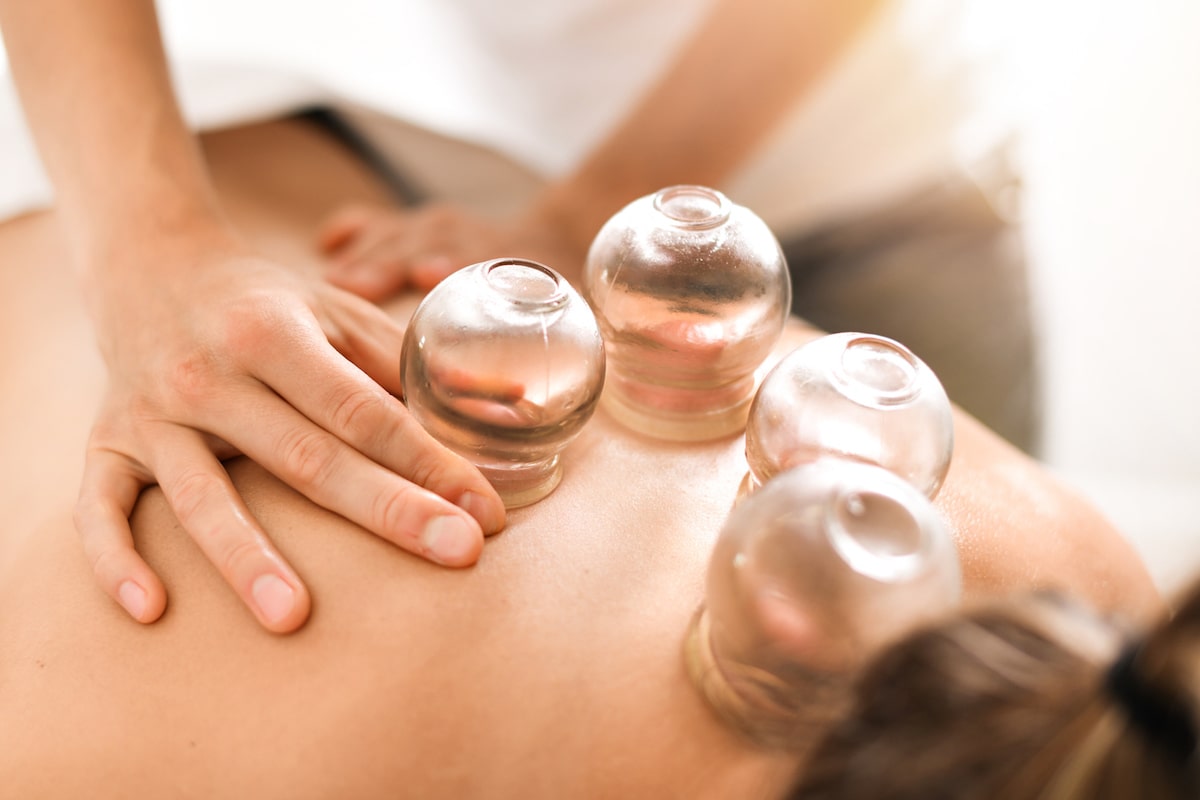Cupping for Foot Neuropathy: Benefits vs. Risks
Cupping therapy has gained so much in popularity lately that you often see celebrities proudly showing off with cupping bruises on their back.
But cupping is not new. It’s one of the oldest traditional pain therapies used in ancient Egyptian, Chinese, and Middle Eastern cultures.
Today, cupping is claimed to have numerous health benefits, including treating chronic low-back pain, reducing inflammation, improving blood circulation, and boosting the immune system.
People suffering from peripheral neuropathy foot pain naturally wonder about cupping for foot neuropathy. Does it work? Can cupping therapy finally help get rid of nerve pain? Is cupping safe for feet with damaged nerves?

Table of Contents
What is Cupping Therapy?
Cupping dates back to the ancient Egyptian, Chinese, and Middle Eastern cultures and can be traced back to the ancient greeks.
The current trend of alternative therapies for pain management has brought cupping therapy back.
The cupping therapist places cups on the skin to provoke suction. The suction is created by a vacuum effect, either by heating and cooling the air in the cup (the traditional method) or by a mechanical pump (the modern way).
The cups are placed on strategic areas of the body and usually left for about 3 minutes.
There are different variations of cupping therapy, the most common ones being dry and wet cupping. Dry cupping is based on the suction-only method, while damp cupping (also called bleeding cupping) involves controlled bleeding. In moist cupping therapy, the skin is punctured before the cups are placed on it, so blood is drawn out during the suction process.
What are the health benefits of cupping?
There are few scientific studies on cupping therapy, and very little evidence exists to prove its potential health benefits.
Cupping therapists and practitioners claim it can help treat chronic pains, low back pain, blood disorders, arthritis, fibromyalgia, skin problems, acne, high blood pressure, migraines, anxiety, varicose veins, infertility, and plenty of other health conditions.
A 2018 review of studies by the Journal of Acupuncture and Meridian Studies found the suction process in cupping therapy to have the following beneficial effects:
- Boost superficial blood flow
- Increase pain thresholds
- Reduce inflammation
- Boost secular immunity
- Change the skin’s biomechanical properties
- Improve local anaerobic metabolism
Even though science does not back up any cupping health benefits and studies are limited, many try cupping for chronic pain. So, we can wonder: does cupping work for peripheral neuropathy? What are the risks and side effects?
What is peripheral neuropathy?
Peripheral neuropathy is damage caused to the peripheral nerves, usually in the feet and sometimes in the hands. More than 20 million people in the States only are affected by peripheral neuropathy.
The leading cause is diabetes, but peripheral neuropathy can also be caused by chemotherapy treatments for cancer patients, alcoholism, exposure to toxins, trauma, infections, and other factors.
The symptoms and their intensity vary depending on the individual. Peripheral neuropathy often causes numbness, loss of sensation, sharp pains, cramps, tingling, prickling, burning sensation, loss of balance, and muscle weakness. The pain can sometimes be extreme and debilitating.
Complications of peripheral neuropathy in the feet
Peripheral neuropathy is dangerous for the feet. Foot complications are prevalent and include burns, skin injuries, infections, and in the worst cases, foot ulcers and gangrene. Each year, more than 80,000 Americans are amputated from a toe, a foot, or a limb because of diabetic peripheral neuropathy.
The loss of sensation in the feet caused by damaged nerves leads to unnoticed injuries that quickly get infected or ulcered. Besides, reduced blood circulation in the body’s extremities, often associated with neuropathy, considerably slows the healing process. Ultimately, minor wounds and injuries that would typically heal quickly usually lead to ulcers, gangrene, and foot amputations in patients with peripheral neuropathy.
That’s why people with diabetes or neuropathy are recommended to take extra care of their feet and avoid blisters, skin problems, and injuries.
While cupping may show some exciting benefits for peripheral neuropathy, its typical side effects and potential risks are increased for neuropathy patients at first sight.
Can you Use Cupping for Foot Neuropathy?
The suction process in cupping therapy may show some interesting effects on peripheral neuropathy pain and symptoms.
Besides reducing chronic pain and inflammation, cupping locally increases blood circulation and may help relieve muscle tension, promote cell repair, and create new connective tissues and blood vessels.
However, cupping’s common side effects and potential risks are not recommended for people affected by peripheral neuropathy.
The risks of cupping therapy for neuropathy
Cupping is reasonably safe for most people if performed by a trained professional.
However, side effects are widespread, including burns, bruises, skin infections, itching, and scarring in the area where the cups are placed on your skin.
While these side effects are minor for most people, they can be dangerous for people with peripheral neuropathy.
As said above, neuropathy causes wounds to heal slowly (or never to be able to recover) and to get infected easily. Cupping’s common burns, skin infections, and bruises would heal in a week or two in most cases, but they might never heal if you have neuropathy. They could ultimately lead to severe infections, foot ulcers, gangrene, and amputation.
The risks of cupping for foot neuropathy significantly outweigh the benefits.
Conclusion
Cupping is an attractive alternative therapy for several health conditions. However, because of its typical side effects, it’s not recommended for peripheral neuropathy.
Other alternative treatments and pain management methods have proven to be more effective and less risky for neuropathy. You can find information about some of them here: